McLaren is bringing the fight to Ferrari and Lamborghini with 2 new supercars
Sports car and supercar makers tend to hype their new models’ top speeds, optimized aerodynamics, air cooling intakes and drag coefficients.
But McLaren Automotive, the British supercar maker, cannot stop talking about weight.
Its new 600LT (Longtail) Spider supercar has a dry weight of 2,859 pounds — just 110.2 pounds more than the 600LT Coupe. Versus the competition — looking at you, Ferrari and Lamborghini — the convertible is 176.4 pounds lighter.
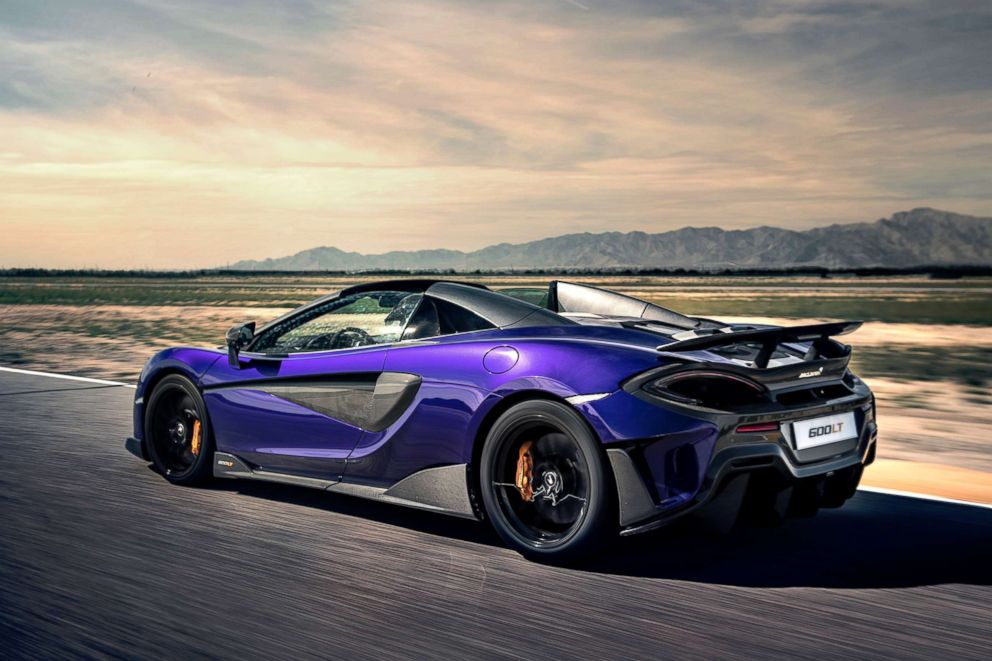
And if you really wanted to know, the 600LT Spider’s sibling, the 570S Spider, packs an extra 219 pounds on its carbon fiber waistline.
Weight makes or breaks a high-performance sports car. Formula One, Nascar, Le Mans, Daytona 500: all the major races are won by seconds or even milliseconds. Engineers for sports car makers spend their entire careers figuring out how to make race cars airtight, featherlight and more nimble.
McLaren’s storied 54-year racing DNA surges through the 600LT Spider’s blood.
The company, which began producing street-legal race cars in 2010, always aimed to be more than just a luxury automaker. Its roots trace back to Bruce McLaren, the brilliant New Zealand race driver who died tragically at England’s Goodwood Circuit in June 1970. Every vehicle that leaves McLaren’s Woking, Surrey, headquarters, was built for one purpose: to be the fastest, most agile, most aerodynamic vehicle on the street.
The $256,500 600LT Spider is the latest incarnation of that vision. Its true purpose is to blast past every competitor on a track. The problem is, very few owners will take it there.
Pinpoint precision
After driving this insanely fast sports car in Scottsdale, Arizona, I quickly recognized its disadvantages: the cops are waiting for you to floor it. The sound emanating from the top-exit exhausts can be deafening with the top down. The racing seats, though appropriate for a car like this, are a snug fit (we’re not all lithesome race car drivers, McLaren! Even if it feels like we are when driving the new Spider). For the most extreme experience, McLaren can strip out the air conditioning, the carpet beneath the seats and footwells, navigation and audio systems, door pockets and glovebox for maximum weight savings.
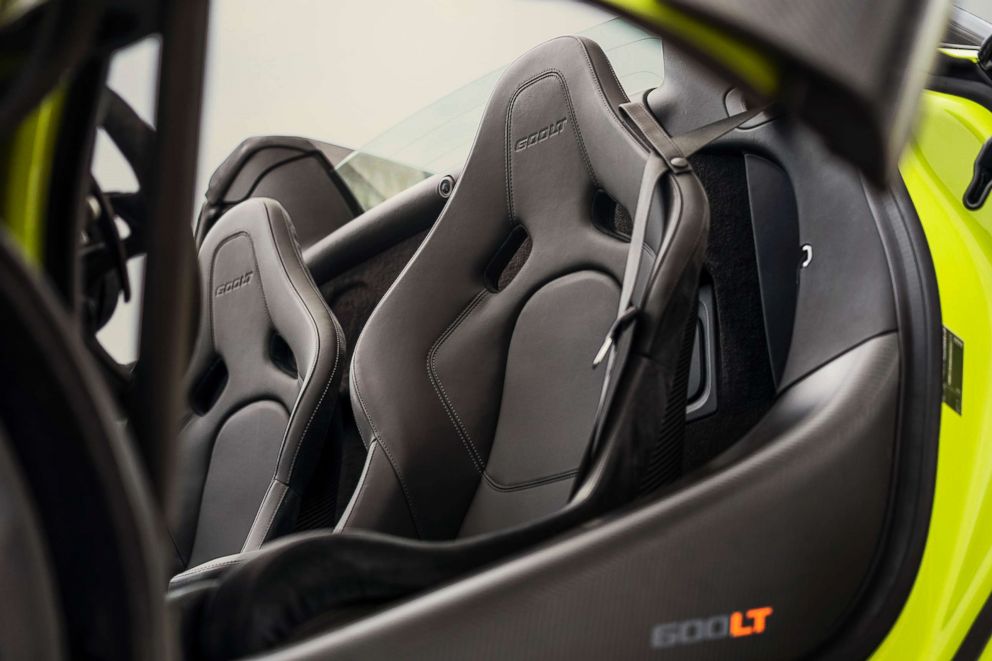
As someone who (mostly) respects the speed limit, I vote for extra padding over functionality.
But none of that mattered at Arizona Motorsports Park, a race track west of Arizona that's situated next to Luke Air Force Base.
There, the 600LT Spider did what it was inherently crafted to do: master every corner with eye-popping precision, float on the straightaways and engage the driver. With each lap, the 600LT Spider begged to go just a little bit faster, reassuring me that it could nail the tight bends and quick break points.
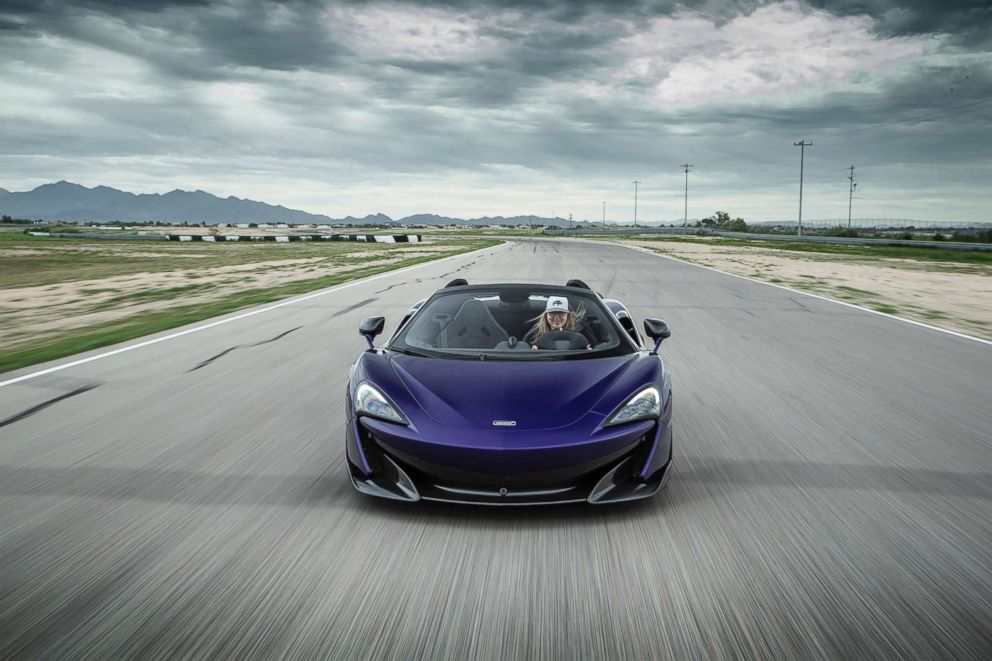
The twin-turbo 3.8 liter V8 engine -- which boasts 592 horsepower and 457 lb.-feet of torque -- can go from 124 mph to a standstill in 397 feet, a reassuring stat when reaching ungodly levels of speed on a track. Connecting with and controlling the vehicle was also instantaneous; the electro-hydraulic steering assistance allows the 600LT Spider to deliver more feedback and sharper on-center response, according to McLaren.
‘There are so many fast cars’
This track-focused sports car has lured longtime Porsche GT3 owners to McLaren, according to Chris Blank, McLaren brand manager for O’Gara Beverly Hills. The southern California dealership moved 219 new and pre-owned McLarens in 2018, making it the top-selling McLaren dealership globally (there are 91 worldwide).
Blank, who has been selling McLarens for more than a decade, said he doesn’t emphasize the explosive power and reduced weight of the McLarens in his showroom.
“You can’t sell performance anymore,” he said. “There are so many fast cars.”
Instead, the sales pitch focuses on practicality and ride comfort.
“These cars are so easy to drive,” he said. “They’re more fun to drive than look at. I encourage my customers to drive their cars. Even the 600LT is usable compared to the competition.”
‘Punch to the gut’
Robb Allen, a tech CEO in New Jersey, loves the “rip and roar” of his 600LT coupe. Likely to trade up to the 600LT Spider, Allen said he feels more connected to the road in the 600LT compared to his past models, the 570S and 720S.
“It’s just a bit more visceral,” he explained. “You get this punch to the gut.”
He said onlookers and fellow motorists are “constantly” bombarding him with questions when he’s cruising around town in it.
“I’ll get, ‘Nice Lambo’ or ‘Is that a Ferrari?’” he said with a laugh. “You don’t see a lot of [McLarens] on the road.”
“I love the way the cars perform and drive,” he added. “The brand just captured my imagination. I went all in on McLaren.”
Word, however, has been spreading rapidly about the technological prowess and ground-breaking design of McLaren’s sports cars.
The company, still relatively niche, delivered a record 4,806 vehicles last year — a 44 percent increase in global sales. In North America, 2018 sales were up 49 percent. McLaren executives are expecting the upward trend to continue: by 2024 the company will produce 6,000 cars a year, part of the 1.2 billion pound ($1.6 billion) Track 25 business plan announced last July, which promises 18 new models and variants by 2025, including hybrids.
Enter the $315,000 720S Spider, the third model unveiled under the plan. We can talk about weight again — it’s the lightest in its class, at 2,937 pounds — but that’s not the point.
Secret identity
The 720S Spider has a secret identity: it advertises itself as a hardcore sports car (710 hp, zero-60 mph in 2.8 seconds) yet it will happily be your everyday driver. Whether you’re in Scottsdale, northern New Jersey, Boston, California or anywhere in the continental U.S., the car will turn heads with its dramatic “eye sockets” and curvaceous lines.
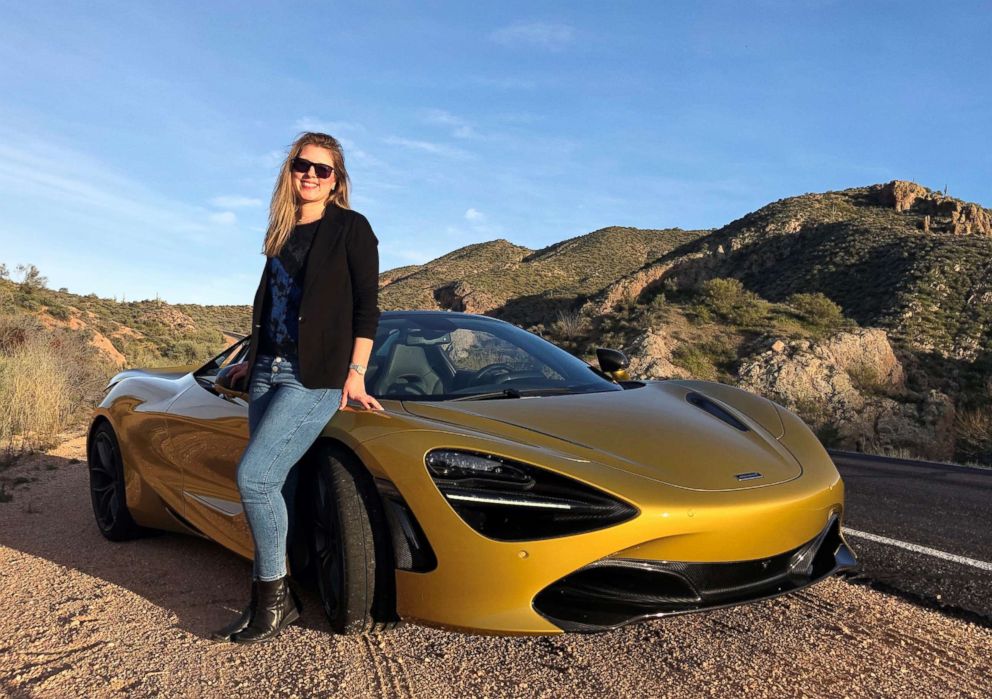
Once you get over the attention, the 720S Spider is a joy to drive — top up or down. There’s really no need to rev the 4.0 liter twin-turbo V8 engine unless you’re late to work. The car will gently purr as you sidestep potholes and engine noise has been greatly reduced in the cabin (if you’re missing the outside world, you can lower the rear window).
McLaren even redesigned its dihedral doors for added convenience, giving more room for the driver and passenger to enter or exit the vehicle (essential when squeezing into parking spaces). The car’s ultra-slim A pillar keeps visibility high and the Nappa leather hides cushion the seats for those long-distance drives (which -- trust me -- there undoubtedly will be).
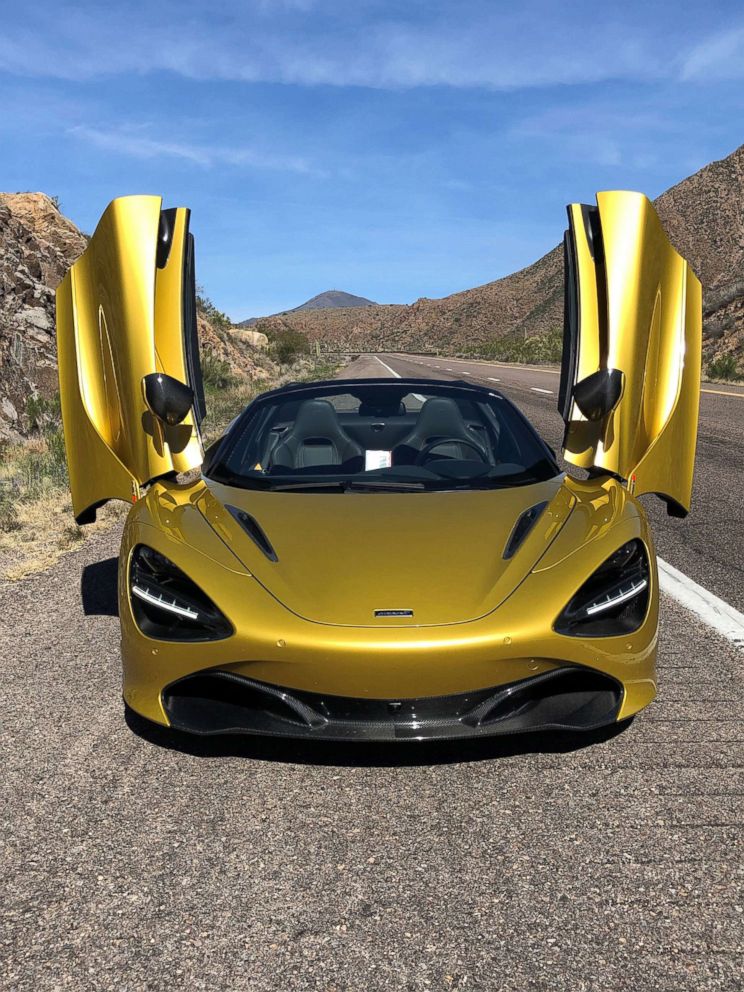
All of the advanced driver-assistance features are available -- 360-degree parking, front and rear parking sensors and HD cameras -- though McLaren executives said they are still working on a deal to incorporate Apple CarPlay and Android Auto into its infotainment system.
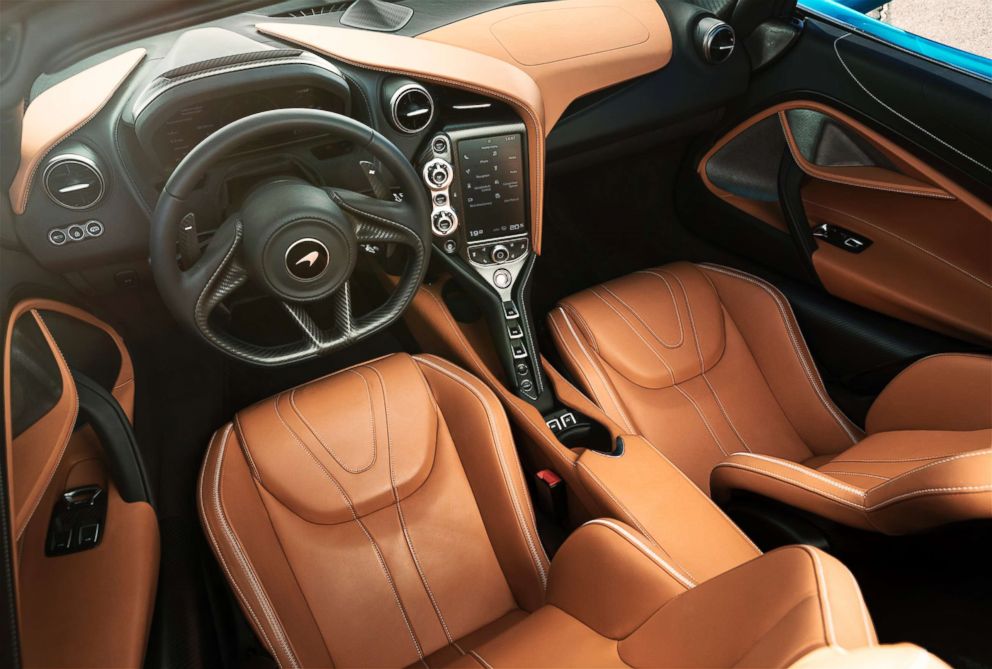
One of the coolest features of the 720S Spider, however, may not be the colors (Aztec Gold, Belize Blue) or even its frameless door design.
The 720S Spider’s retractable hard top comes with a $9,100 glazed roof option. The roof’s electrochromic glass can change from tinted to transparent at the touch of a button, allowing the driver to choose how much sunlight to let into the cabin. It took exactly 11 seconds to close the top, which can be operated at speeds up to 31 mph.
‘A special car’
The two Spiders I tested out West will certainly be welcomed by McLaren’s core group of loyal owners. McLaren aims to get its customers to keep writing checks for its six and seven figure supercars and methodically snatch customers away from its Italian rivals. This rarefied market can be demanding and cutthroat and all sports car makers need to be well attuned to the whims and desires of the uber-wealthy.
Lorenzo Marinuzzi always thought he’d be a Ferrari owner until he spotted the 570S Coupe in March 2016. The New York lawyer has upgraded his McLaren fleet over the years and he was one of just 500 customers to get his hands on the $1 million McLaren Senna. His supercar, the 436th to be produced, will be arriving in the U.S. this summer.
“The Senna is a special car,” he said, “and I am lucky to get the opportunity to be in that club.”
For now he’ll keep the snow tires on his 720S Coupe, which he drives to the office every day from his home in New Jersey.
“It’s so smooth, so comfortable, it’s like driving around in a Bentley,” Marinuzzi said. “I didn’t enjoy my Corvette Z06. Lamborghinis are not user-friendly. With Ferrari, I don’t want to beg someone to take my money. I am pretty particular with what I want.”
Marinuzzi sounds like a man ready to have a McLaren Spider in his garage next year.




